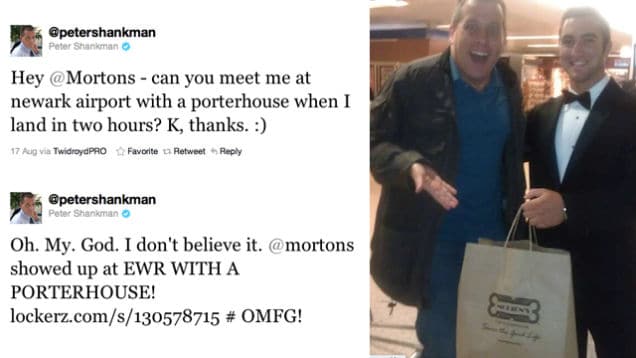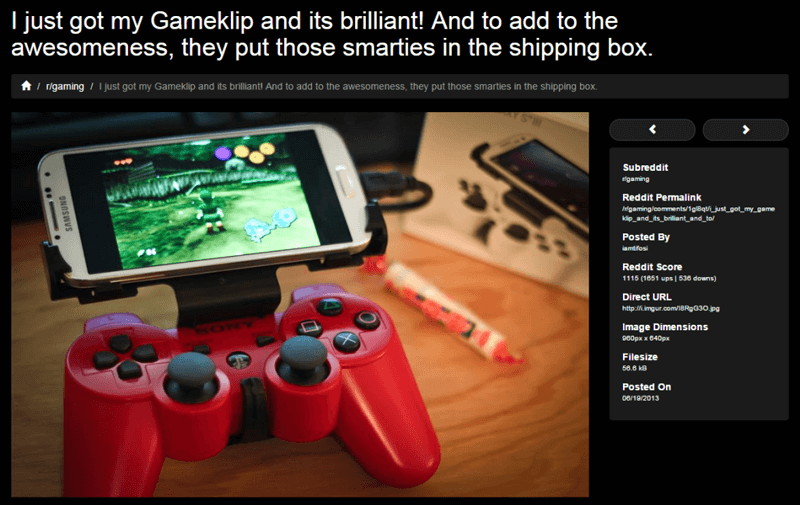How To Market Better and Grow Your Small Business Faster Using The Psychology of Reciprocity

“Scratch my back, and I’ll scratch yours.”
You may call it paying it forward, quid pro quo, or just returning the favor, but science has a word that describes this trait: reciprocity.
Reciprocity is one of the most fundamental principles of marketing psychology.
What is reciprocity?
Our need to return a kindness given or shown to us is deeply ingrained in our psyche. Psychology Today explains the science behind reciprocity:
This tendency has survived and been present throughout human history because it has survival value for the human species. The noted archaeologist Richard Leakey describes the essence of what makes us human is this system of reciprocity. “We are human because our ancestors learned to share their food and their skills in an honored network of obligation.”
One of the best-known books on the subject is Dr. Robert Cialdini’s book Influence: The Psychology of Persuasion. In it, Cialdini looks at the Principle of Reciprocity and how even the smallest gestures can often have a powerful effect.
In one example, Cialdini observed that when waiters gave diners a mint at the end of a meal, the average tip amount increased by 3%. If two mints were given, tips increased by 14%.
And if the waiter left one mint with the bill, but then quickly returned to give a second, the tip increased by a whopping 23%.

We just emailed the info to you.
Examples of reciprocity in action
When used correctly, reciprocity can be a powerful tool to inspire action. Marketers have used the principle of reciprocity in many different ways and to significant effect.

Dunkin’ Donuts turned wins by the Philadelphia Eagles into free coffees and huge mobile downloads.
Dunkin’ Donuts
Dunkin’ Donuts ran a campaign that leveraged reciprocity and the idea of “giving to getting” effectively.
Called “Eagles Win, You Win,” the campaign offered Philadelphia area customers a free coffee the day after the Philadelphia Eagles won a game. The free coffee was redeemed via the Dunkin’ Donuts mobile app.
The campaign was a big success, with the donut chain reporting over a quarter million customers taking advantage of the free coffee offer every week after an Eagles win. This drove huge downloads of the mobile app, which exposed customers to carefully targeted promotional messaging and incentives.
Sales and general foot traffic increased because of the free offer, demonstrating reciprocity’s power.
Morton’s Steakhouse
Morton’s Steakhouse also used reciprocity to gain lots of free publicity and advertising.
They used a method commonly known as “surprise and delight.” The basic idea is to surprise customers with something that delights them, hoping the principle of reciprocity will kick in.
Multichannel Merchant explains:
One of the most viral examples of the “surprise and delight” strategy came from a rather traditional, old-fashioned brand: Morton’s Steakhouse. In 2011, a traveler jokingly tweeted Morton’s, requesting for a steak to be waiting for him when his plane landed. So Morton’s went ahead and sent a tuxedoed staff member to the airport to wait for the traveler with a big, juicy Porterhouse – free of charge! A positive, memorable experience is a win-win for everybody: it makes customers happy, drives word-of-mouth, and keeps them coming back to your store.
Zappos
Zappos is another company that uses surprise and delight to great effect, whose customer service exploits are legendary for encouraging deep customer loyalty and viral word-of-mouth.
One great example is when a traveler to Las Vegas checked into her hotel, only to discover she had forgotten her favorite shoes at home. She went on the Zappos’ site to buy a replacement, but the site was out of her size. So she called customer service. The company didn’t have her size in stock, but it found a pair at a Las Vegas mall near its headquarters.
Someone from Zappos went to the mall, bought the shoes, and then hand-delivered them to the customer at her hotel, all free.
Practical Ecommerce looked at the benefits Zappos got from this “act of customer service heroism”:
It almost certainly cost Zappos money. So why is this one of the secrets to online retail success? To get the answer just imagine how the customer felt. No doubt, she’ll shop Zappos again. She probably told lots of friends, who told their friends. And the goodwill that the company generated most certainly did more for the business than any advertising or marketing program Zappos might have spent those dollars on.
How can you use reciprocity to grow your business?
Here are ways you can use reciprocity in your own marketing initiatives, and some things to keep in mind.
Be authentic
The principle of authenticity goes hand-in-hand with the principle of reciprocity. As we recently wrote,
Authenticity is a significant factor in increasing your customers’ trust in you and your business.
In a global study completed a few years ago, The Age of Authenticity revealed that 63 percent of consumers would choose to buy from a brand they perceived as authentic over less-authentic competitors.
Customers will see right through any attempts at currying return favors or actions if they don’t come from an authentic place.
Studies have found that it’s less about what is being given or when it was given but more how it was given.
By focusing on how actions are exchanged, each type of authenticity determines the symbolic value imputed to the benefit and that value directly influences the party’s decision of whether to repay the benefit and the determination of what an appropriate repayment would be as well as indirectly influencing exchange behaviors toward their partner.
Also be sure that your customers and prospects know that when you give them something special, it comes from you. This means finding creative ways to incorporate your company’s name and business logo so that the customer knows the source of their happiness.
Saying thank you
Saying “thank you” to a customer can seem like a small, mostly insignificant act, but it can have a noticeable effect on a customer’s behavior.
A study that looked at restaurant tips found that when the server wrote thank you, included a happy face, or added a tip about an upcoming special to the back of a bill, the amount of tip left by customers increased by 17-20%.
Writing a thank you note or email to a customer can leverage the same reciprocity that restaurant servers used on customer’s bills.
Three ways you can say thank you include:
Thank you pages
Create a thank you page for downloads, registrations, purchases, and other customer actions. You can also include details of what the customer did on this page to help tie their action to the thank you.
Thank you emails
Similarly, send customers a short email thanking them for a recent transaction. You can also provide them with the information they may need or be looking for regarding the transaction.
Handwritten thank-you notes
These may take more effort and time, but they can be very effective. Companies like Stitch Fix include handwritten thank notes inside all of their clothing shipments, which not only act as a seed for reciprocity, but also help increase the authenticity and personalized nature of the service.
Make customers feel unique
Stitch Fix’s personalized notes demonstrate something that helps increase the possibility of reciprocity: the customer should feel like whatever is being offered is being individually provided to them.
Besides personalized notes, you can also help increase the sense that a gesture is for that specific customer by using demographic or geographical targeting (give them something specific to who they are or where they live), or by offering a set of things and letting the customer choose.
Offer something of value
Give customers something they find valuable outside of the existing relationship or services you already offer them. Coupons and deals are always an excellent way to encourage repeat business, but inspiring the customer to return the favor often requires something above and beyond.
For example, don’t just give your customers individual discount codes, but also give them codes they can share with their friends or family.
Meal prep services like HelloFresh uses this technique extensively by providing new customers with free meals they can send someone else as a gift.
Free gift inside!
A great strategy is to add in an unexpected gift to customer’s orders. Gameklip does this very simply and cheaply: they include a package of candies (specifically Smarties) with every order.
As the social media posts show, this small surprise is something that people love, and they return the favor by sharing it with their friends and network.
Suggest how customers can reciprocate
Once you’ve provided your customer with a nice gift or surprise, give them some ways they can pay it forward. Make it easy for them to do something of value for you.
If you’re looking to build word of mouth, make it easy for customers to pass along your business to others. Give them simple ways to share content with their social media contacts.
The referral process is a great way to encourage reciprocity because it makes it obvious to the customer that they’re receiving and giving value when they pass along the gift to a friend.
Make your customer feel special, and they’ll return the favor and help your business grow.
Design Done Better
The easiest way to get affordable, high-quality custom logos, print design, web design and naming for your business.
Learn How to Grow Your Business With Beautiful Design


